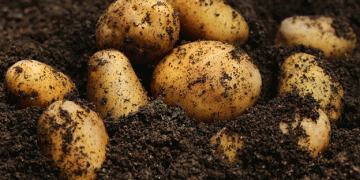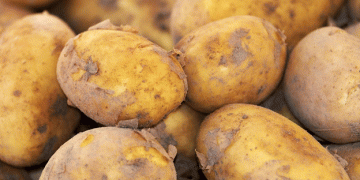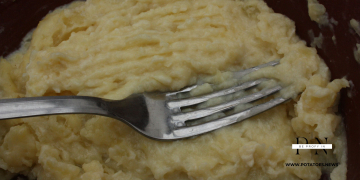In the Una district of Himachal Pradesh, farmers are facing a new set of challenges due to the unpredictable weather patterns and the heavy fog that has been affecting their crops, especially potatoes. The fog has been particularly damaging, as it is causing potato plants to wilt and burn, significantly impacting yields. Coupled with the erratic temperature fluctuations, the situation is further exacerbated, putting farmers under considerable stress.
Effect of Fog on Potato Crops
The fog, along with fluctuating weather patterns, is harming potato crops in the region. Farmers report that the potato plants are suffering from excessive moisture, leading to burns and damage to the young plants. As fog persists, it creates a greenhouse effect, trapping moisture around the plants, which in turn causes diseases like blight. This weather anomaly is causing significant crop loss, leaving farmers with diminished harvests.
According to the latest data, the temperature swings have been substantial. For instance, on January 15, the maximum temperature recorded was 24.2°C, with a minimum of 1.7°C. The following days saw similar fluctuations, with temperatures rising and falling unexpectedly. These rapid changes are not conducive to the optimal growth of potatoes, making it challenging for farmers to predict harvest outcomes.
The Threat to Wheat Crops
In addition to the potato crop, wheat cultivation is also under threat due to the unpredictable weather. Wheat crops in the region are vulnerable to diseases like yellow rust (Puccinia striiformis), which thrives in fluctuating temperatures and high moisture levels. The wheat crop in Una spans over 35,514 hectares, producing approximately 80,000 metric tons of wheat annually. If left unchecked, diseases like yellow rust can spread quickly, affecting large areas of the crop.
Agricultural experts have warned that the changing weather conditions could lead to severe outbreaks of yellow rust. If left untreated, the disease spreads rapidly through the air and water, damaging the wheat leaves, causing them to turn yellow, and eventually leading to crop loss. If not managed in time, it could spread across vast fields, significantly diminishing the wheat yield for the year.
Potato Harvest and Market Demand
Despite these challenges, Una’s potato crop continues to attract interest from traders across India. Every year, traders from Punjab, Delhi, Rajasthan, Mumbai, Haryana, and several other states flock to Una to purchase thousands of tons of raw potatoes, which are less expensive and require less effort than mature potatoes. The raw potato harvest typically spans 2 months and 10 days, with much lower labor and pesticide costs compared to mature potatoes, which require up to 4 months of intensive work.
In Una, farmers typically cultivate around 1,300 to 1,400 hectares of land for potatoes, yielding around 27,500 metric tons annually. However, due to the adverse weather conditions, the harvest for this year may break records—although the damage caused by fog and fluctuating temperatures could also impact these predictions.
The unpredictable weather and persistent fog in Una district are significantly affecting the agricultural output of key crops such as potatoes and wheat. Farmers are struggling with reduced yields, diseases, and the increasing cost of crop management. To mitigate these impacts, it is essential for farmers to adopt adaptive strategies like using protective covers for potatoes, disease-resistant wheat varieties, and improved irrigation practices. Additionally, timely intervention by agricultural departments to monitor and address crop diseases will be vital in safeguarding farmers’ livelihoods.
The situation in Una highlights the broader issue of how climate change and erratic weather patterns are affecting agriculture across India. Moving forward, it will be crucial for farmers, agronomists, and policymakers to collaborate on solutions that can help build resilience in the face of these challenges.






